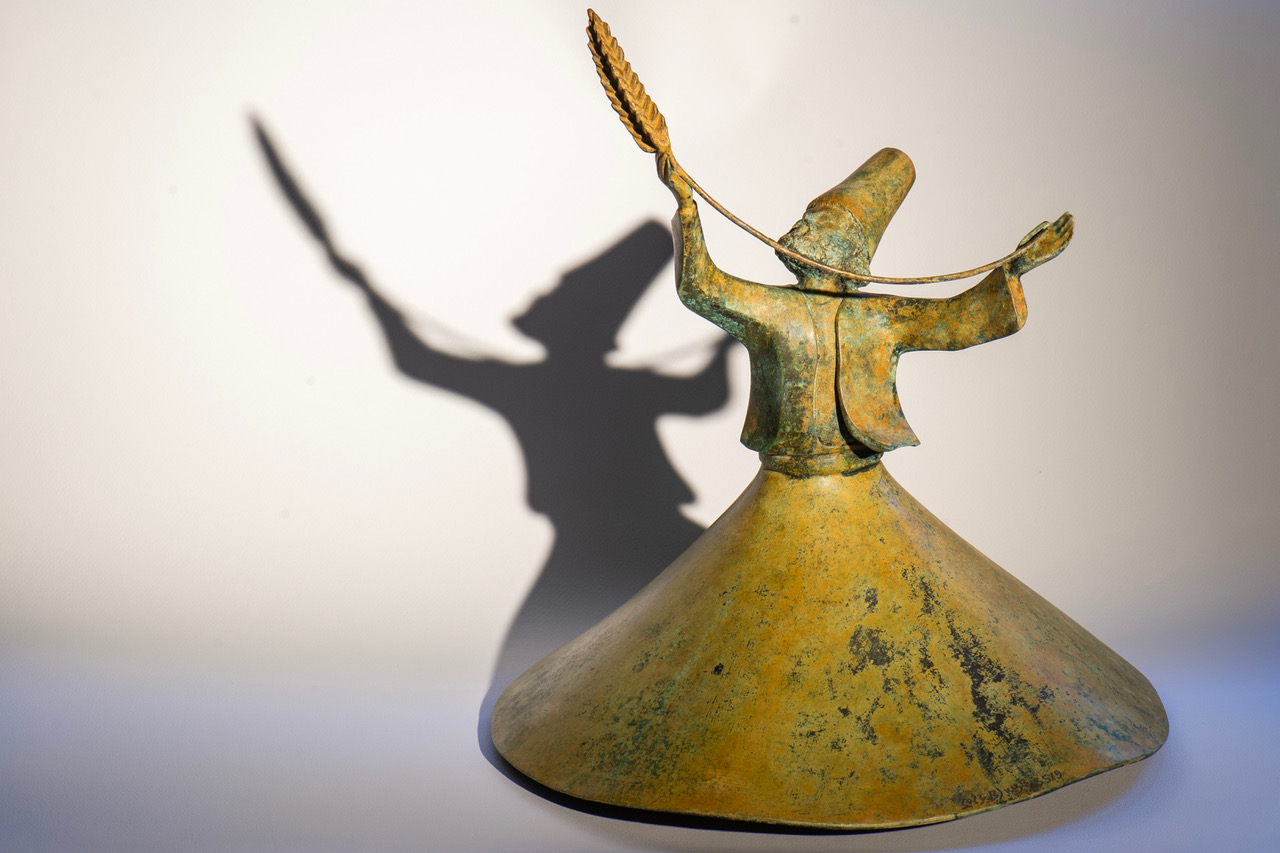Atelier Maher Attar in Gemmayzeh is pleased to invite you to attend the exhibition of the Syrian artist Badie Jahjah, which runs from December 20 to 30. Since the artist's works revolve around dervishes, this event will include a group of dervishes statues that spin directly in front of the eyes, performing a group of movements(Praying,reading) and interpreting their meanings. A group of acrylic paintings (mostly dervishes) will also be displayed, in addition to bronze statues of different sizes.
About the artist:
He was born on March 8, 1973 in Syria, in the city of Latakia overlooking the sea. He graduated from Fine Art College in Syria in “Visual Communications” in 1995. During the Syrian war, he founded the “Alif Noun” gallery and opened it in 2016. He began his artistic career as a painter, drawing dervishes and Arabic calligraphy, and then he added to his talents the talent of sculpting, which he did not use until 2016.
In his conversation with “Modern Arabesque,” I asked him a set of questions revolving around his beautiful works and his view of the dervish, which is considered the basis for most of his works.
What is the dervish movement? Is it dancing? Is a dervish considered a dancer?
I do not like the idea of dancing according to Darwish, but rather the idea of rotation, because rotation is a physical state of the universe, planets, stars, and relationships...
What is the origin of the dervish?
The dervish is part of the Sufi traditions that existed to bring the relationship with God within the vertical relationship built on love and gratitude, and thus the horizontal relationship between people becomes a relationship with controlled behavior in terms of friendliness and kindness.
What are the meanings of the movements performed by the dervish?
When the dervish spins counterclockwise, it is in a state of taking energy, but when it spins clockwise, it is in a state of giving. The dervish movements revolve around the basic idea of “give and take,” and this is the basic message of the exhibition: When people learn the culture of “give and take,” energy automatically changes, and flows smoothly like spring water.
Why did you focus as an artist on Dervish?
Dervish's idea I began working on it during the Syrian war, in 2012. I dealt with the idea of the dervishes as a state of knowledge and felt that it was an open prayer that would save our souls that were affected and hurt by war, sectarianism, and problems. Therefore, I felt that the Dervishes show represented a refuge to which we could escape from war, and I saw it as a spot of unconditional serenity, piety, and beauty.
Darwish is a state of liberation and abandonment at a time when everyone is moving towards deep integration into sects. The dervish is a spot of freedom that makes your wings grow. The dervish is part of our world and is not separated from it, but rather it rises and rises.
What metals are used to make Dervish statues?
“Bronze” is the metal used, but it is colored with a type of oxide that reacts with heat, light, water, and air. Therefore, I work with the elements of nature to create a “beautiful piece of art,” with which the attendees interact by turning it on or off.
The exhibition is an invitation to return to the spirit of the East, away from the currents of modernity that destroy identity and turn it into a transient, materialistic state. The oriental ideas and mystical texts that I used to make these statues were sealed with the same seals that were extracted from the spirit of the dervish, and thus the dervish becomes a “mystical document” for the new generation.
What does the concept of “mystical document” mean?
The Mystical Document is a document that calls on the new generation, which is currently far from its Eastern identity, to be rooted again in its original identity. The new generation is about to disappear, and this disappearance, to me, is destructive to the person and his soul. This document is a kind of building a bridge between current and future generations and a call to restore this hijacked identity.
“Darwish Habaq”: The Darwish path is a path through which you test the extent of your humanity and your relationship with your surroundings and nature. The dervish is a person who knows his size and is like dust “on the thresholds of God.” No matter how strong he is, he is weak.
As Mawla Jalal al-Din said: “Alone at your doorstep I remain like dust, while others come and go like the wind. The path to God is from Habaq.” ( Habak in English means Basil ) .
The reason for using the word “habak” is that this word is composed of three letters: the first two letters are “love,” the first and last letters are “The Right,” and the opposite of the word is “ugliness.”
Life requires awareness of two words: “Love and Rights”! This is the path of the dervish
You can see below some of the paintings and sculptures exhibited .





.jpeg)


